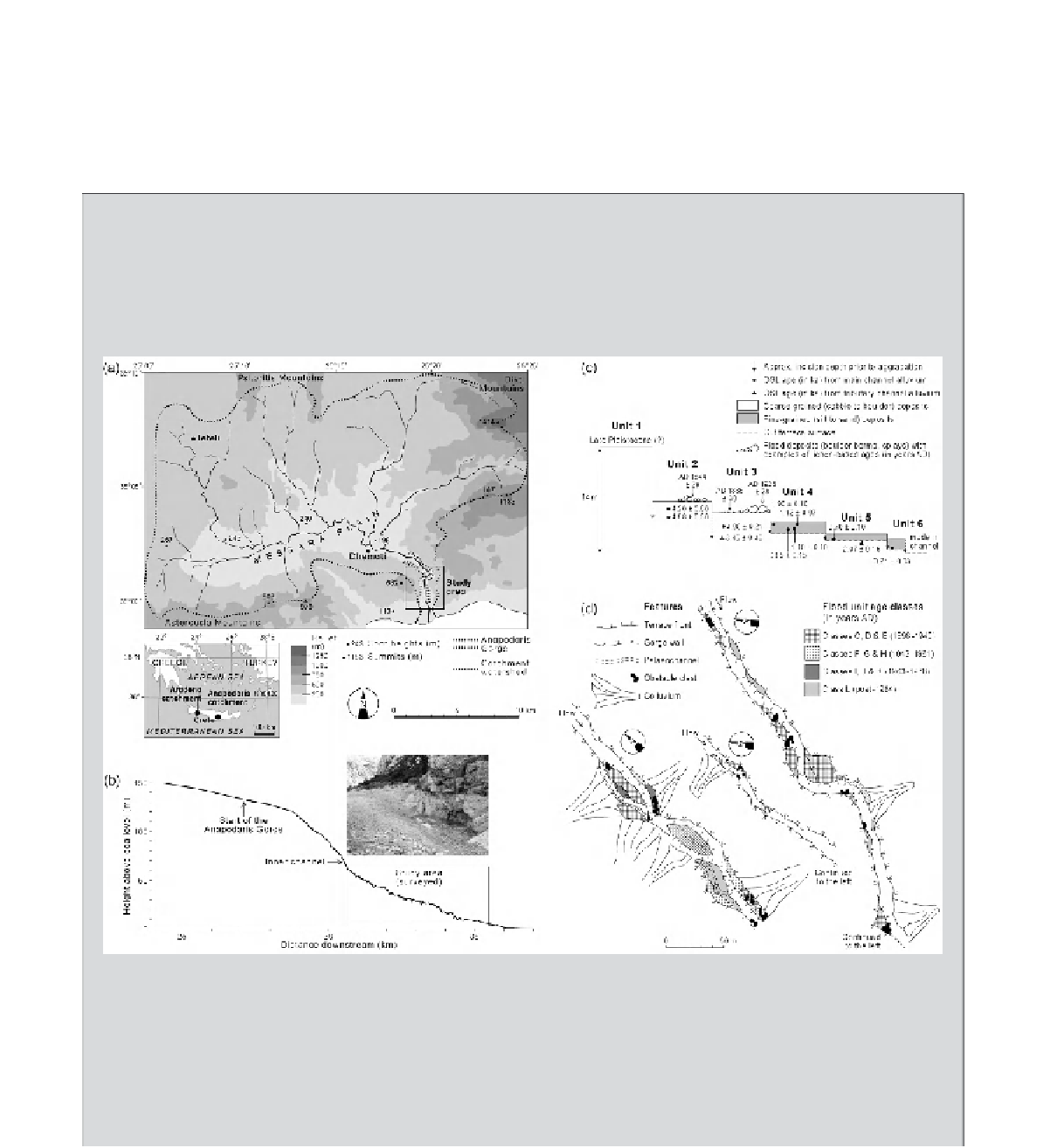Geoscience Reference
In-Depth Information
2008), while in the Dead Sea rift valley major fluctuations
in the level of the Dead Sea and its precursors have also
influenced river behaviour (e.g. Niemi, Ben-Avraham and
Gat, 1997; Enzel, Agnon and Stein, 2006). Across much
of the region, these environmental changes have combined
to result in phases of enhanced hillslope sediment supply
and channel aggradation, which typically have been su-
perimposed on underlying longer-term incisional trends,
leading to the production of complex but decipherable ter-
race records along many dryland rivers (Lewin, Macklin
and Woodward, 1995; Macklin and Woodward, 2009; see
also the example in Box 12.1).
Box 12.1
Gorge-bound rivers in Crete
The arid to semi-arid island of Crete contains many ephemeral and intermittent, high-gradient bedrock, boulder-
bed or cobble-bed rivers. A reach of the Anapodaris River, located in a gorge in the lower part of a 500 km
2
catchment in south central Crete (Figure 12.5(a)), exemplifies how strong slope-channel coupling makes many
Figure 12.5
(a) Location and topography of the Anapodaris catchment, south central Crete (spot heights and contours
in metres above sea level), showing the location of the study area in the gorge (modified, after Macklin
et al.
, 2010). (b)
longitudinal profile of the Anapodaris River through the gorge, as derived from a combination of 1 : 5000 topographical
maps and field survey data (modified, after Macklin
et al.
, 2010). The inset shows a typical scour pool developed within one
of the constrictions in the surveyed part of the gorge. (c) Schematic cross-section (to scale in the vertical) to illustrate
the morphological and stratigraphical relationships, sedimentology and optically stimulated luminescence (OSL) ages of the
alluvial units in the Anapodaris Gorge. Examples of lichen-based age estimates for recent flood deposits are also indicated
(modified after Macklin
et al.
, 2010). (d) Geomorphological map of part of the Aradena Gorge (see Figure 12.5(a) for location)
showing the position of colluvial and alluvial deposits and the lichen- and tree ring-based ages of coarse-grained valley floor
surfaces (modified after Maas and Macklin, 2002).

